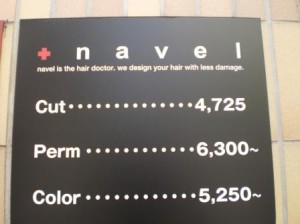Starting up your own business – a budget is pure gold

lunch on a budget at the world famous Japadog stand in downtown Vancouver
by Gary Weigh Business Coach Mentor
Before you actually start up your own business and embark on your business strategy implementation, I want to talk about the incredible value of creating a budget for your proposed venture.
Let’s say that you sell a line of home-made jewellery at $20 a piece and your gross profit percentage is 45%. That means for every item sold, you will have $9.00 left over after paying the cost price ($11.00) to buy or make that item.
If you sell 20 items in a day, your total sales for the day will be $400. The cost to buy or make those 20 items will be $220 (i.e. $11 x 20), and you will have $180 (i.e. $9 x 20) left over to pay for all your other business costs – i.e. your overheads. In simple terms, your overheads are those expenses that don’t relate directly to the buying or making of your product; but they are necessary to run your business.
If you didn’t have any overheads, then the $180 per day (calculated above) would be your profit. But of course, you will have other expenses to pay. Even if you work from home, you will have telephone, internet and other communication costs. You will probably have some stationary and some promotion / advertising costs. It is also likely that you will incur part of the cost of running a car. And don’t forget that your own time and labour is not free. You must pay yourself just as you pay other people.
These are just a few typical expenses, but if they happen to average out at $180 per day, then you will not make any profit. (Think of profit as your investment or entrepreneurial return for taking a risk). In fact, you will be at your breakeven point – no profit, no loss! From here you can make a profit (or increase profit) by:
• Increasing the number of sales you make each day
• Increasing the price of each item (but that might result in less sales)
• Buying or making the jewellery at a cheaper cost price
• Cutting back on your overhead expenses.
So before you begin starting up your own business, you can gain some idea of revenue, direct product costs, overhead expenses and likely profit. It is called a Business Operating Budget, because it relates to the ongoing business operation.
Before you get to business strategy implementation (the operating stage) you will firstly need to spend some money to set up your business (e.g. fit-out, furniture, equipment and website). You can create a budget for this too. It is called a Business Setup Budget.
Keep your two budgets separate so you don’t mix one-off set up purchases (e.g. office furniture) with regular ongoing operating expenses (e.g. monthly phone bill).
By setting all of this on a spreadsheet (e.g. Microsoft Office Excel), you can change the important variables and test the result (on paper at least). You can try various levels of price, volume, product cost and overheads. This is called ‘What if’ analysis. By doing this, you can create a business with a level of spending and a bottom line to suit your purse. It’s part of planning your own business.
If you seek startup advice or a powerful online business presence when starting up your own business visit http://garyweigh.com/business-startup
Until next time!
Gary

